Upper Colorado River States Add Muscle as Decisions Loom on the Shrinking River’s Future
WESTERN WATER NOTEBOOK: Upper Basin States Seek Added Leverage to Protect Their River Shares Amid Difficult Talks with California and the Lower Basin
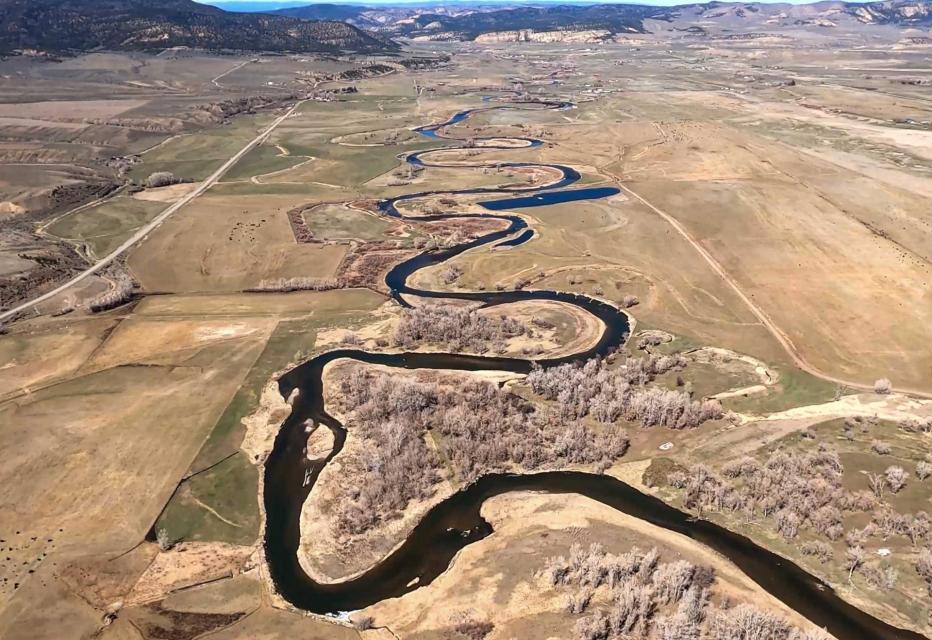 The states of the Lower Colorado
River Basin have traditionally played an oversized role in
tapping the lifeline that supplies 40 million people in the West.
California, Nevada and Arizona were quicker to build major canals
and dams and negotiated a landmark deal that requires the Upper
Basin to send predictable flows through the Grand Canyon, even
during dry years.
The states of the Lower Colorado
River Basin have traditionally played an oversized role in
tapping the lifeline that supplies 40 million people in the West.
California, Nevada and Arizona were quicker to build major canals
and dams and negotiated a landmark deal that requires the Upper
Basin to send predictable flows through the Grand Canyon, even
during dry years.
But with the federal government threatening unprecedented water cuts amid decades of drought and declining reservoirs, the Upper Basin states of Wyoming, Utah, Colorado and New Mexico are muscling up to protect their shares of an overallocated river whose average flows in the Upper Basin have already dropped 20 percent over the last century.
They have formed new agencies to better monitor their interests, moved influential Colorado River veterans into top negotiating posts and improved their relationships with Native American tribes that also hold substantial claims to the river.
“I see [the Upper Basin states] absolutely gearing up and being ready for a full-blown confrontation with the Lower Basin.”
~Pat Mulroy, former general manager, Southern Nevada Water Authority
While the Upper Basin has had a joint-bargaining arm in the Upper Colorado River Commission since 1948, the individual states are organizing outside the commission and doing more to look out for their own interests.
Pat Mulroy, who helped shape Colorado River water policy for nearly 30 years as former general manager of the Southern Nevada Water Authority, said the moves signal a political shift in the Upper Basin to become a tougher negotiator and force California, Nevada and Arizona to live with less.
“I see [the Upper Basin states] absolutely gearing up and being ready for a full-blown confrontation with the Lower Basin,” Mulroy said.
Unprecedented Federal Action Looms
The 1922 Colorado River Compact divided the river into Upper and Lower Basins and entitled each with 7.5 million acre-feet of water per year. While the Upper Basin routinely uses far less than its yearly apportionment, the Lower Basin commonly uses its full share even during dry years. The discrepancy in usage as drought depletes key reservoirs on the river remains a chief source of discontent between the two Basins, a century after the Compact’s signing.
Currently, the seven Basin states and tribes are negotiating immediate water-use reductions. They must reach a deal in the coming months to fend off the federal government, which is threatening to intervene if the Basin’s water users don’t come up with an acceptable plan to address chronic water shortages.
Long-term drought, rising demand and the changing climate have severely diminished the river’s main reservoirs, Lake Powell behind Glen Canyon Dam on the Arizona-Utah border and Lake Mead behind Hoover Dam near Las Vegas.
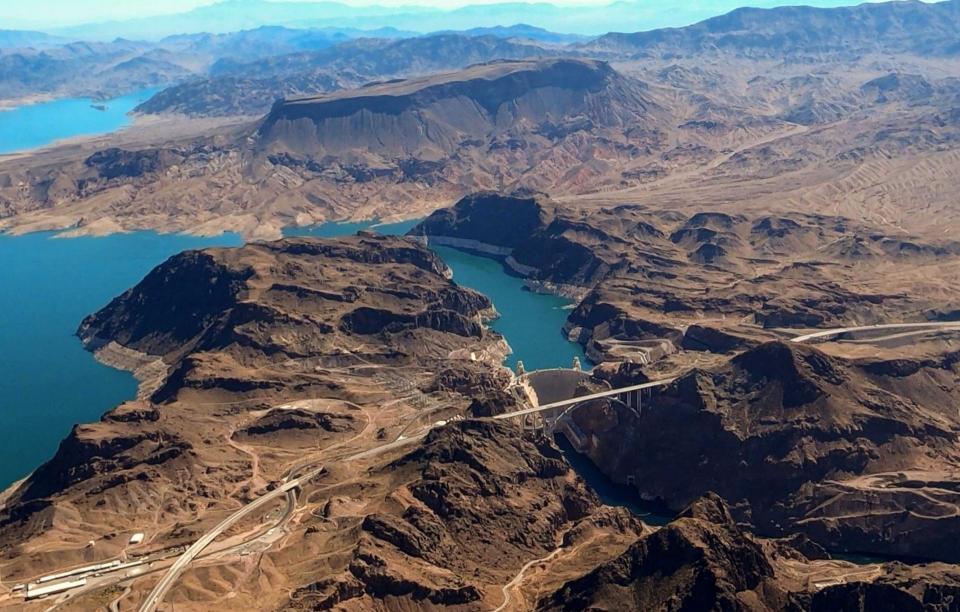 With both reservoirs falling to
record-low levels, the Department of the Interior gave the Basin
states and tribes an ultimatum: Agree to buoy the reservoirs and
keep the giant dams producing hydropower, or we’ll unilaterally
decide who takes cuts. Interior’s Bureau of Reclamation directed
the parties to trim their combined usage by 2 million to 4
million acre-feet, or 16 percent to 33 percent, of the river’s
average annual flow dating back to 2000.
With both reservoirs falling to
record-low levels, the Department of the Interior gave the Basin
states and tribes an ultimatum: Agree to buoy the reservoirs and
keep the giant dams producing hydropower, or we’ll unilaterally
decide who takes cuts. Interior’s Bureau of Reclamation directed
the parties to trim their combined usage by 2 million to 4
million acre-feet, or 16 percent to 33 percent, of the river’s
average annual flow dating back to 2000.
Earlier this month, Interior officials presented three options it may take absent a seven-state consensus. One would cut supply to senior water-rights holders, including California’s Imperial Irrigation District, the biggest single user of Colorado River water. Officials said they will make a final decision this summer and that the revised rules will go into effect next year if the states can’t make a deal.
Mulroy, a senior fellow for climate adaptation and environmental policy at the University of Nevada, Las Vegas, called the plans “ambitious” and said they would likely spark a lawsuit from California if senior rights are targeted. She said the federal government’s probable goal is to push the states into further negotiations.
JB Hamby, chair of the Colorado River Board of California, pushed back on the federal proposals and argued that they wrongly shield the Upper Basin.
“The pain is moved around between the three Lower Basin states without even modeling or considering participation from our partners in Mexico or the Upper Basin states,” Hamby said.
In addition to a short-term drought fix, the Basin states and 30 tribes are also scrambling to replace the river’s operating rules, which expire in 2026. The states have a golden opportunity to craft a framework that addresses climate change and the river’s changing hydrology, said Eric Kuhn, a former Colorado water manager and co-author of a book on the 1922 Compact.
“There’s a structural deficit that needs to be solved and we have to go beyond the structural deficit because we allowed reservoirs to get as low as they are without taking action,” he said.
Muscling Up to California and the Lower Basin
California, the largest user of Colorado River water with a 4.4 million acre-feet annual entitlement, has been a dominating presence in the Basin dating back to the 1870s when Palo Verde farmers and miners filed the first claim to the river’s water.
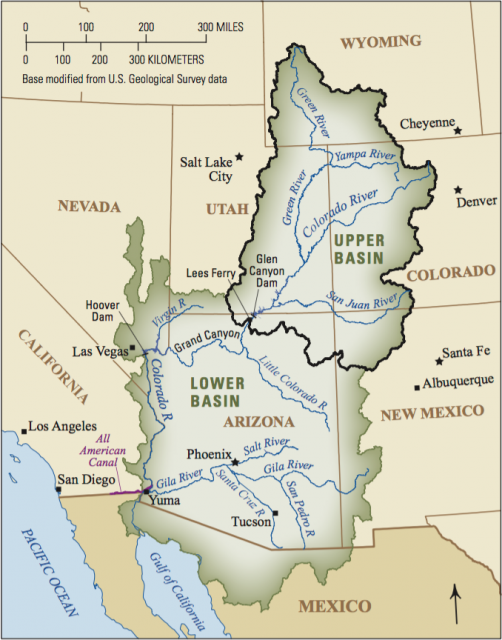 California lawmakers played a
pivotal role in convincing Congress in 1928 to help fund
construction of the All-American Canal and Hoover Dam. Nine years
later, in 1937, the state created the Colorado River Board of
California to protect its water rights.
California lawmakers played a
pivotal role in convincing Congress in 1928 to help fund
construction of the All-American Canal and Hoover Dam. Nine years
later, in 1937, the state created the Colorado River Board of
California to protect its water rights.
In the current negotiations over a dwindling river, the Upper Basin states are seeking to maximize their leverage by taking a page from California’s playbook.
In 2021, the Utah Legislature approved the Colorado River Authority of Utah, a seven-member board created to manage the state’s river interests. Founded during an extended period of population growth, the authority was tasked with improving Utah’s bargaining position on the river. Utah is entitled to 23 percent of the Upper Basin’s river share and uses around 1 million acre-feet per year.
The creation of the authority has given Utah for the first time a united approach to handling Colorado River issues, said Gene Shawcroft, who chairs the authority. He added that the 2021 law removed some red tape and gave the authority more flexibility than the state engineer, who previously led Utah’s river management.
“The state engineer was woefully underequipped to deal with the issues on the river,” said Mulroy, the former Nevada water official. “The [authority] will hopefully provide some level of forum for unified decision-making.”
Utah diversified the authority in 2022, adding a board seat designated for a tribal member. The inaugural seat is held by Paul Tsosie, an attorney who is a member of the Navajo Nation and previously served as Interior’s Indian Affairs chief of staff.
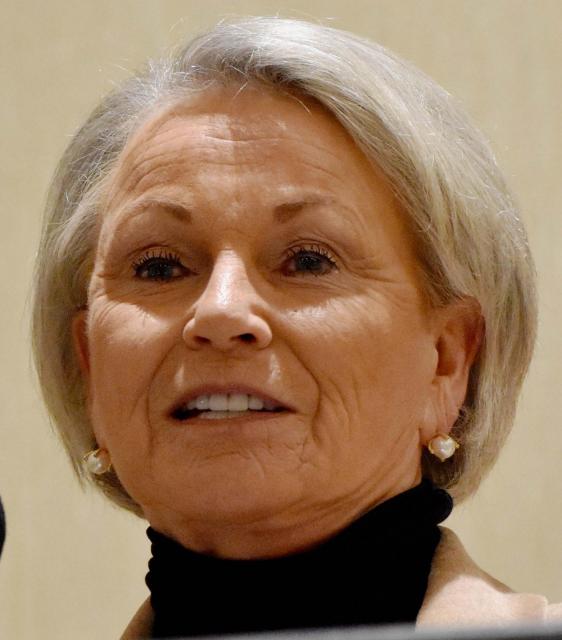 “My service does not replace official
Native American tribal consultation, but I will serve as a voice
to ensure that Indian Country is included in decisions made by
the Colorado River Authority,” Tsosie said in a statement.
“My service does not replace official
Native American tribal consultation, but I will serve as a voice
to ensure that Indian Country is included in decisions made by
the Colorado River Authority,” Tsosie said in a statement.
As the largest user of river water in the Upper Basin, Colorado is also attempting to increase its political clout.
Colorado Gov. Jared Polis has asked the Legislature to expand the Colorado River Water Conservation Board and create an executive position within the Colorado Department of Natural Resources that would focus directly on river issues. If lawmakers approve the budget item, Rebecca Mitchell would move from director of the conservation board into the new executive position this summer.
Meanwhile, a bipartisan group of Colorado lawmakers want to create 15-member task force that would study Colorado River issues. The panel would include the state’s top water officials and managers and representatives from tribal, farming and environmental groups.
“I see it as the Upper Division states and the Upper Colorado River Commission scaling up to respond to the importance of these negotiations,” said Mitchell, the state’s main river negotiator and representative on the Upper Colorado River Commission.
The river’s main reservoirs are expected to get a boost in the coming months from the Basin’s largest snowpack since 1997, but Mitchell said keeping the pressure on the Lower Basin to rein in its usage is one of Colorado’s top priorities.
“We need to head-on address the overuse in the Lower Basin and provide for a complete accounting of depletions and evaporation,” she said.
Currently, Upper Basin states are charged for evaporation losses but the Lower Basin is not. Federal officials estimate as much as 10 percent of the river’s flow evaporates annually, including more than 1 million acre-feet from the Lower Basin.
Arizona and Nevada have said in the past year that they are open to new rules that would account for water lost to evaporation, seepage and other system leaks in the Lower Basin, but California remains the lone holdout.
“I see it as the Upper Division states and the Upper Colorado River Commission scaling up to respond to the importance of these negotiations.”
~Becky Mitchell, Colorado’s main river negotiator
Hamby, California’s new top negotiator, cast the push to pin evaporative losses on California as an oversimplified argument that punishes the state for developing its rights to the river faster than others. He said projects that were developed well after California’s, such as the Central Arizona Project, which serves more than 80 percent of Arizona’s population, have added to the imbalance between what Mother Nature provides and what the Lower Basin states, tribes and Mexico use.
While he agrees that fixing the structural deficit in the Lower Basin will be a key piece of the ongoing negotiations, Hamby hinted that progress is drying up on an evaporation deal. “The [existing evaporation proposals] would hit California, Mexico and Lower Basin tribes disproportionately hard. Is that an equitable approach?”
Crafting a path for tribes to be included in water policy decisions has been a high priority recently for Colorado as well as Utah.
In March, Lorelei Cloud of the Southern Ute Indian Tribe in southwest Colorado became the first tribal member appointed to the Colorado Water Conservation Board. Cloud was also among the tribal participants in a historic forum last August hosted by the Upper Colorado River Commission that focused on tribal water issues.
“It’s essential that the seven Basin states include and consult with the Colorado River Basin tribes in the post-2026 reservoir operations negotiations,” Mitchell said.
New Mexico & Wyoming
Wyoming (14 percent) and New Mexico (11 percent) receive the smallest portions of the Upper Basin’s annual apportionment but are nonetheless looking to play big roles in the discussions.
To bolster its stake in the river, New Mexico last year reappointed Estevan Lopez, a former Reclamation commissioner, to handle its river negotiations. Lopez, who as Reclamation commissioner helped negotiate the Lower Basin Drought Contingency Plan that was eventually signed in 2019, said New Mexico wants to see evaporative losses in the Lower Basin settled.
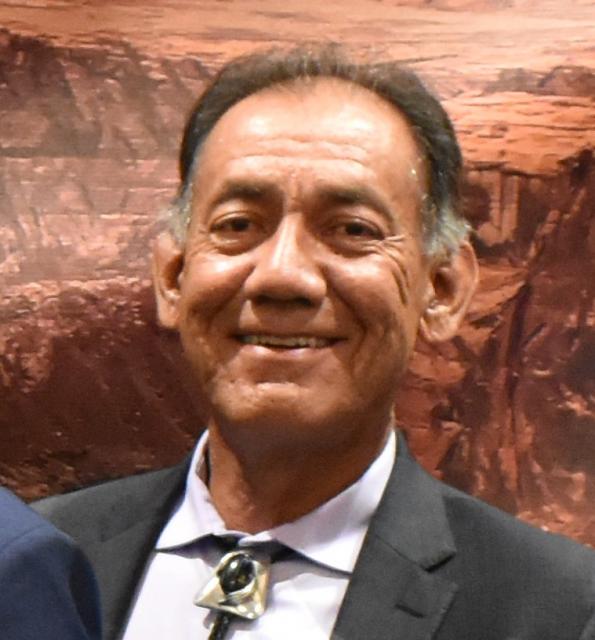 Securing federal resources to improve
tribal water development, particularly a drinking water pipeline
for the Navajo Nation, is another top priority for New Mexico.
Lopez said the state is doing more now than ever to involve
tribes that hold rights to the Colorado River – Navajo Nation and
Jicarilla Apache Nation – in water policy conversations.
Securing federal resources to improve
tribal water development, particularly a drinking water pipeline
for the Navajo Nation, is another top priority for New Mexico.
Lopez said the state is doing more now than ever to involve
tribes that hold rights to the Colorado River – Navajo Nation and
Jicarilla Apache Nation – in water policy conversations.
“I think we have as much transparency with the tribes as we’ve ever had and we’re trying to build on it,” Lopez said.
Meanwhile, Wyoming Gov. Mark Gordon last month approved an advisory committee that will aid the State Engineer’s Office in river issues. The 11-member committee includes farmers, environmentalists, municipal water managers and elected officials. Gordon also approved legislation that funds studies for new water developments and creates a full-time position that will focus partly on Colorado River issues.
The Upper Basin states are digging in, solidifying their bargaining capabilities and pushing for new rules that reflect the West’s changing climate and hydrology. They hope the added focus will result in a new approach that avoids litigation and causes everyone on the river to tighten their belts, regardless of priority rights.
“Everyone recognizes that we’re going to have to learn to live on less, I think that’s a given,” said Shawcroft, Utah’s top water official. “We’ll get there on a deal there’s no doubt about it, but everyone will have a little less water.”
Reach Writer Nick Cahill at ncahill@watereducation.org.
Know someone else who wants to stay connected with water in the West? Encourage them to sign up for Western Water, and follow us on Facebook , Twitter, LinkedIn and Instagram.
Further Reading From Western Water
- As Colorado River Flows Drop and Tensions Rise, Water Interests Struggle to Find Solutions That All Can Accept, Dec. 9, 2022
- As Drought Shrinks the Colorado River, A SoCal Giant Seeks Help from River Partners to Fortify its Local Supply, April 29, 2022
- As Climate Change Turns Up The Heat in Las Vegas, Water Managers Try to Wring New Savings to Stretch Supply, June 25, 2021
- Milestone Colorado River Management Plan Mostly Worked Amid Epic Drought, Review Finds, Nov. 20, 2020
- The Colorado River is awash in data vital to its management, but making sense of it all is a challenge, Sept. 11, 2020
- Questions Simmer About Lake Powell’s Future As Drought, Climate Change Point To A Drier Colorado River Basin, May 15, 2020
- Can a Grand Vision Solve the Colorado River’s Challenges? Or Will Incremental Change Offer Best Hope for Success? Dec. 13, 2019
- With Drought Plan in Place, Colorado River Stakeholders Face Even Tougher Talks Ahead On The River’s Future, May 9, 2019
- As Shortages Loom in the Colorado River Basin, Indian Tribes Seek to Secure Their Water Rights, Nov. 2, 2018









